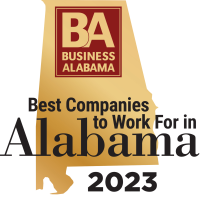Food and beverage operations make up a high-risk industry, and air compressors are valuable tools throughout processing and packaging. With the need for efficiency, consistency and cleanliness, compressed air meets every requirement. Learn about air compressors for beverage packaging and how food packaging plants can remain contaminant-free.
Compressed Air in Food Facilities
Compressed air is a versatile tool in the food industry, particularly in packaging. Many food facilities need to package high volumes of food in a given day, and compressed air systems offer the efficiency these operations need for their product lines. Typical applications for compressed air in food packaging plants include:
- Vacuum sealing.
- Air-cleaning packaging.
- Generating nitrogen for food preservation.
- Sanitizing packaging machines.
- Blow molding for packaging containers.
- Operating diaphragm pumps for liquid distribution.
- Cold compressing frozen products.
Facilities regulate air compressors into packaging lines because they deliver consistent, repeatable results. For example, air compressors for vacuum sealing ensure every product will stay fresh, and all packages will look the same on the shelf. Beyond consistency, air compressors can meet sanitary requirements in food processing and packaging.
Contamination and Contact System Types
In the United States, the Centers for Disease Control and Prevention (CDC) estimate 48 million people get sick every year from foodborne illnesses. Preventing contamination is critical to consumer safety, and many food facilities prefer air compressors because they can meet a high cleanliness standard.
Without proper care and preventative measures, air compressor systems may contain microorganisms, oil vapors and aerosols, dirt, dust and spores. Air compressors are separated into three categories to determine the best configurations and care measures for food safety.
Contact
When air compressors come into direct contact with food items, manufacturers take extreme measures to prevent contamination. Examples of a contact air compressor are air knives used to chop produce or jet nozzles for peeling vegetables.
In these instances, preventing contaminants is critical. Manufacturers will avoid oil-based systems to prevent contaminating aerosols. Carbon filters remove any excess oil vapors, and desiccant dryers reduce moisture where microorganisms can grow.
Non-Contact High Risk
In these compressed air systems, there is no direct contact with food, but there may be indirect contact. An example of this category is compressed air used to mold packaging. The air doesn’t touch the food, but the packaging will later on in the production line. These systems use similar measures as contact systems to prevent potential contamination.
Non-Contact Low Risk
In cases where the air compressor makes no direct or indirect contact, the system is low risk. These systems are often called plant air systems, and they go toward the general function of the plant, like cleaning non-food-related machinery. Typically, these systems are oil-free to reduce vapors, and they’re designed to have a specific dew point setting that will prevent excess moisture where microorganisms can grow.
At Quincy Compressor, we understand the demands of the food industry, and we give you the guidance you need for choosing air compressors for beverage packaging. From atmospheric contamination and storage to compressor types, we set you up with the best unit for your operation.
Contact Quincy Compressor for Compressed Air in Food Facilities
For over a century, Quincy Compressor has offered reliable air compressors with premium performance for a range of applications. Our 24-hour service support, industry-leading warranty protection and high-quality engineering mean you can count on us for your air compressor needs.
When you need air compressors for food and beverage packaging, we’ll ensure your system is consistent and safe. Get a quote for your air compressor or contact us today.

